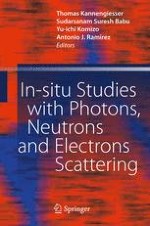2010 | OriginalPaper | Buchkapitel
In Situ Scanning Electron Microscopy High Temperature Deformation Experiments to Study Ductility Dip Cracking of Ni–Cr–Fe Alloys
verfasst von : E. A. Torres, F. G. Peternella, R. Caram, A. J. Ramírez
Erschienen in: In-situ Studies with Photons, Neutrons and Electrons Scattering
Verlag: Springer Berlin Heidelberg
Aktivieren Sie unsere intelligente Suche, um passende Fachinhalte oder Patente zu finden.
Wählen Sie Textabschnitte aus um mit Künstlicher Intelligenz passenden Patente zu finden. powered by
Markieren Sie Textabschnitte, um KI-gestützt weitere passende Inhalte zu finden. powered by
